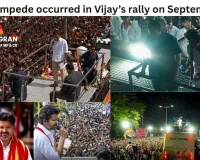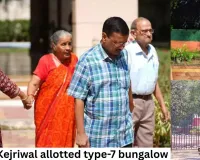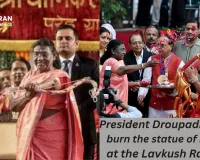No Normalcy in Ladakh Even After 16 Days of Violence: Desolate Streets, Empty Hotels, and Official Claims of “Everything Normal”
Digital Desk

Even after the curfew was lifted, Leh’s main market remains eerily quiet. Once bustling with tourists for most of the year, the streets now stand empty. Hotels that once charged ₹5,000–₹10,000 a night are struggling to find guests even at ₹500–₹1,000. Taxi stands are deserted, with drivers waiting for bookings that never come. The town seems to have more security personnel than visitors.
“We’ve never seen such days before,” said Rigzin Wagmo Lechik, president of the Leh chapter of the All Ladakh Hotel and Guest House Association. “Violence has robbed us of our season’s happiness. And yet, the Lieutenant Governor claims everything is normal. But nothing about our lives feels normal anymore.”
Lechik added that while the Pahalgam incident earlier this year had already reduced tourism by 50%, the recent violence has deepened the crisis, causing losses of nearly 80%. “Around 2,000 guesthouses and hotels are vacant. Tourism makes up half of Ladakh’s GDP, and by October, bookings for next March and April usually begin. This year, not even one pre-booking has been made,” she said. “In a few weeks, the snow will close everything down. If we can’t earn now, how will we survive the next six months?”
Internet services in Leh were restored late Thursday night after local protests, though no official notification was issued. The district collector, meanwhile, has warned of strict action against those spreading fake news online. Connectivity had been suspended following the September 24 violence, which claimed the lives of three youths and a 46-year-old ex-serviceman, Sewang Tharching.
For 16 days, Leh remained disconnected — with all 2G, 5G, and Wi-Fi services suspended. “Even now, Section 163 prevents more than five people from gathering,” said Shering Dorje, co-chairman of the Leh Apex Body. “Schools have reopened, but classrooms are empty. The administration says everything is normal, but on the ground, the situation is far from it.”
Leh Taxi Union President Thinles Namgyal shared similar concerns: “Since September 24, we haven’t had a single booking. About 6,000 taxi drivers are sitting idle. Families are struggling to make ends meet.”
Who Ordered the Firing?
A major unanswered question still haunts the people: who gave the order to open fire on September 24?
According to Dorje, the violence erupted during a peaceful fast led by activist Sonam Wangchuk. As tensions rose and stone-pelting began, police opened fire, killing four people. “For 16 days, we’ve been asking who ordered the firing, but the administration has stayed silent. We demand a judicial inquiry so the victims’ families can get justice,” Dorje said.
Although the Deputy Commissioner of Leh appointed SDM Nubra Mukul Beniwal to investigate, the Leh Apex Body has rejected the probe, calling it biased. Members, speaking anonymously, claimed that their own findings suggest the firing order did not come from the local administration. “If that’s true, then who was behind it? We need an honest, independent investigation,” they said.
Wangchuk in Jodhpur Jail; Supreme Court Hearing on October 14
Social activist Sonam Wangchuk, detained under the National Security Act (NSA) following the violence, remains in Jodhpur Central Jail. His wife, Gitanjali, who met him recently, said his “spirit remains unbroken” and that he continues to demand a judicial inquiry into the deaths.
“The legal team has received his detention order, and we will challenge it in court,” she said. A petition for his release has been filed in the Supreme Court, which is scheduled to hear the case on October 14.
Despite official claims of calm, Leh’s silence tells a different story — one of loss, uncertainty, and a community still waiting for answer







1.jpg)
1.jpg)
1.jpg)
1.jpg)
